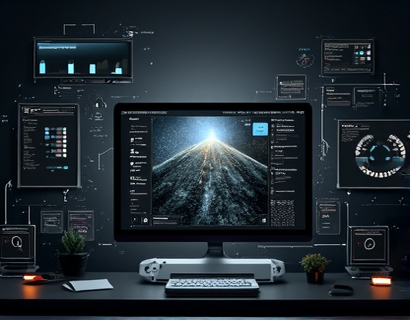Maximizing Civic Engagement: Leveraging Real-Time Data for Transparent Governance
In the digital age, the intersection of technology and governance has opened new avenues for enhancing civic engagement. Real-time data has emerged as a powerful tool for fostering transparency and accountability in government operations. This article delves into the transformative potential of real-time government data in revolutionizing civic engagement through open access and transparency. By exploring the benefits, challenges, and best practices, we aim to provide a comprehensive understanding of how real-time data can empower citizens and strengthen democratic processes.
Understanding Real-Time Government Data
Real-time government data refers to the immediate and continuous flow of information from government entities to the public. This data encompasses a wide range of information, including budget allocations, policy decisions, public service delivery metrics, and more. The key characteristic of real-time data is its immediacy, allowing citizens to access up-to-the-minute information on government activities and decisions.
The concept of real-time data in governance is not new, but its implementation and accessibility have significantly improved with advancements in technology. Modern information systems and open data initiatives have made it possible to collect, process, and disseminate data in real time. This shift from delayed or periodic reports to instantaneous updates marks a significant step towards greater transparency and responsiveness in government.
Benefits of Real-Time Data for Civic Engagement
One of the most significant advantages of real-time government data is its ability to enhance transparency. When citizens have immediate access to government data, they can better understand how decisions are made and how public resources are utilized. This transparency builds trust between the government and the public, as citizens can verify claims and track the progress of initiatives in real time.
Real-time data also promotes accountability. Government officials and agencies are more likely to act responsibly when their actions and decisions are publicly visible and accessible. The constant scrutiny from the public can act as a deterrent against corruption and inefficiency. Moreover, real-time data enables citizens to hold their representatives accountable by providing evidence of performance and compliance with promises.
Another benefit is the empowerment of citizens. With real-time data, individuals can make more informed decisions about their participation in the democratic process. Whether it's voting, attending public meetings, or engaging in policy discussions, citizens can act based on the most current and relevant information. This informed participation is crucial for a healthy democracy, as it ensures that the voices of the people are heard and considered in governance.
Real-Time Data and Public Service Delivery
Real-time data can significantly improve the delivery of public services. For instance, in the healthcare sector, real-time data on hospital capacities, patient wait times, and resource availability can help both patients and administrators make better decisions. Patients can choose the most suitable facility based on current conditions, while administrators can allocate resources more efficiently to reduce wait times and improve patient care.
Similarly, in the realm of transportation, real-time data on traffic conditions, public transit schedules, and road maintenance can enhance the efficiency and reliability of transportation services. Citizens can plan their journeys more effectively, reducing congestion and travel time. For government agencies, real-time data provides insights into the performance of transportation systems, enabling proactive maintenance and service improvements.
The education sector can also benefit from real-time data. Schools and educational institutions can use real-time data to monitor student attendance, performance, and resource utilization. This information can help educators identify areas needing improvement and implement targeted interventions. Parents and students can access this data to make informed decisions about educational choices and support systems.
Challenges in Implementing Real-Time Data
Despite the numerous benefits, the implementation of real-time data in governance faces several challenges. One of the primary challenges is the technical infrastructure required to collect, process, and disseminate data in real time. This includes robust data management systems, high-speed internet connectivity, and secure data storage solutions. Developing and maintaining this infrastructure requires significant investment and expertise.
Data privacy and security are also critical concerns. Real-time data often contains sensitive information, and ensuring the protection of this data is paramount. Governments must implement stringent security measures to prevent data breaches and unauthorized access. Additionally, clear policies and regulations must be in place to govern the collection, use, and sharing of data, balancing transparency with privacy rights.
Another challenge is the digital divide. Not all citizens have equal access to the internet and digital devices, which can exacerbate existing inequalities. To ensure that real-time data truly enhances civic engagement, efforts must be made to bridge the digital divide and provide access to all segments of the population. This includes investing in public internet access points and digital literacy programs.
Best Practices for Real-Time Data Implementation
To maximize the impact of real-time data in governance, several best practices should be followed. First, simplicity and user-friendliness are crucial. Data should be presented in an accessible format, using clear language and intuitive interfaces. This ensures that citizens of all technical backgrounds can easily understand and utilize the information.
Second, continuous engagement with the public is essential. Governments should actively seek feedback from citizens to refine and improve data offerings. This can be achieved through surveys, public forums, and online platforms where citizens can voice their opinions and suggestions.
Third, collaboration between government agencies and technology partners is key. Public-private partnerships can leverage the expertise and resources of the private sector to enhance data collection, analysis, and dissemination. These collaborations can lead to innovative solutions and more efficient data management processes.
Finally, transparency in data governance is vital. Governments should be transparent about the sources of data, the methods used for data collection and analysis, and any limitations or biases in the data. This transparency builds trust and credibility, encouraging greater public trust and engagement.
Case Studies: Successful Real-Time Data Initiatives
Several cities and countries have successfully implemented real-time data initiatives, demonstrating the positive impact on civic engagement and governance. For example, the city of Barcelona has developed an open data portal that provides real-time access to a wide range of data sets, including traffic, environmental quality, and public services. This portal has empowered citizens to monitor city operations and contribute to urban planning efforts.
In New York City, the Open Data 311 system allows citizens to report non-emergency issues such as potholes, broken streetlights, and litter in real time. The data is then processed and used by city officials to prioritize and address these issues efficiently. This initiative has not only improved service delivery but also increased citizen participation in urban management.
Another notable example is Estonia, a digital pioneer in government services. The Estonian government has implemented a comprehensive digital infrastructure that provides real-time access to a wide array of services, from voting and tax filing to healthcare and education. This has significantly enhanced transparency and convenience, making governance more citizen-centric.
Future Directions: Enhancing Real-Time Data for Civic Engagement
As technology continues to evolve, the potential for real-time data in governance is vast. One promising area is the integration of artificial intelligence and machine learning to analyze and interpret large volumes of data. AI can help identify patterns, predict trends, and provide actionable insights, further enhancing the utility of real-time data for both government and citizens.
Another direction is the use of mobile technologies to increase access to real-time data. With the widespread use of smartphones, mobile apps can deliver real-time information directly to citizens' devices, making it more accessible and convenient. This is particularly important in reaching underserved communities and ensuring inclusive civic engagement.
Furthermore, the development of standardized data formats and interoperability protocols can facilitate the sharing and integration of data across different government agencies and levels of governance. This interoperability can lead to a more cohesive and comprehensive view of government operations, benefiting both policymakers and the public.
Lastly, education and awareness campaigns are essential to maximize the impact of real-time data. Governments should invest in programs that educate citizens about the availability and importance of real-time data, encouraging active participation and informed engagement in the democratic process.
In conclusion, real-time data has the potential to revolutionize civic engagement by enhancing transparency, accountability, and citizen participation. While challenges exist, the benefits are clear, and with the right approach, real-time data can empower citizens and strengthen democratic governance. As we move forward, continued innovation and collaboration will be key to realizing the full potential of real-time data in governance.










































